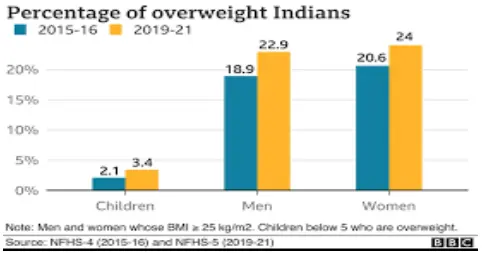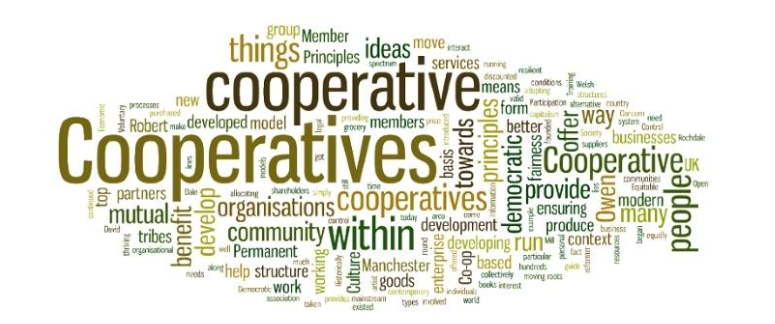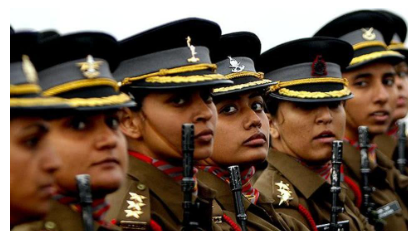Friday, 8th March 2024
Amul: Cornerstone of India's Dairy Industry
In News: The Prime Minister joined in commemorating the 50th anniversary of the Gujarat Cooperative Milk Marketing Federation (GCMMF) and emphasized the achievements of Amul, originating from GCMMF.
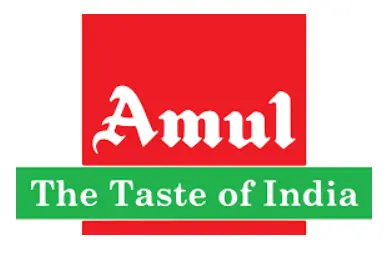
History of Amul: Nurturing India's Dairy Legacy
- Establishment and Founders
- Founded in 1946 as the Kaira District Co-operative Milk Producers’ Union Limited in Anand, Gujarat, Amul was established by Tribhuvandas Patel, with support from Morarji Desai and Sardar Vallabhbhai Patel.
- Formation of Amul Brand
- In 1950, the brand Amul (Anand Milk Union Limited) was officially formed, representing the dairy products produced by the cooperative.
- GCMMF Management
- Currently managed by the Gujarat Co-operative Milk Marketing Federation (GCMMF), Amul is jointly owned by over 3.6 million milk producers in Gujarat.
- Anand Pattern and Cooperative Model
- Amul pioneered the Anand Pattern, an economic organizational model designed to empower small producers through collective action. This approach fosters integration among producers, enabling economies of scale while preserving individual autonomy.
- International Recognition
- Amul's success became a global case study in cooperative economics and rural development, playing a pivotal role in India's White Revolution.
- White Revolution and Global Reach
- Spearheading the White Revolution, Amul significantly contributed to making India self-sufficient in milk. Today, Amul products are exported to over 50 countries, involving a vast network of cooperative committees and farmers.
India's White Revolution (Operation Flood): Transforming Dairy Dynamics
- NDDB Establishment
- In 1965, the National Dairy Development Board (NDDB) was established, chaired by Verghese Kurien, known as the 'Father of White Revolution in India.'
- Operation Flood Phases
- Phase I (1970-1980): Initiated with support from the European Union, Operation Flood linked 18 milksheds with consumers in major cities and laid the foundation for village cooperatives.
- Phase II (1981-1985): Expanded milksheds to 136, outlets to 290 urban markets, and established a self-sustaining system of 43,000 village cooperatives.
- Phase III (1985-1996): Strengthened infrastructure, emphasized veterinary healthcare, and expanded dairy cooperatives to 173 milksheds.
- Post-Operation Flood and Challenges
- Post-liberalization in 1991, the dairy sector witnessed growth but faced challenges like unregulated dairies and the need for regulatory oversight, leading to the Milk and Milk Products Order (MMPO) in 1992.
Current State and Initiatives in India's Dairy Sector
- Current Milk Production: India leads global milk production, contributing 24% of the total. In the last decade, production increased by 60%, with a per capita availability rise of 40%.
- Top 5 Milk-Producing States: Rajasthan, Uttar Pradesh, Madhya Pradesh, Gujarat, and Andhra Pradesh.
Challenges Faced
- Low Milk Yield: India struggles with lower milk yield per animal due to factors like poor quality feed, traditional breeds, and inadequate veterinary care.
- Collection and Processing Challenges: Issues persist in collection, pasteurization, and transportation of milk, especially in informal dairy setups.
- Adulteration Concerns: Adulteration remains a challenge, impacting quality control efforts.
- Profit Disparities: Disparities in profit distribution within the value chain exist, with milk producers often receiving low purchase prices.
- Cattle Health Challenges: Frequent disease outbreaks affect livestock health and productivity.
- Limited Crossbreeding Success: Crossbreeding indigenous species with exotic stocks for genetic improvement has seen limited success.
Way Forward: Enhancing India's Dairy Landscape
- Strengthening Veterinary Care and Quality Control
- Focusing on robust veterinary care and implementing quality control measures is imperative for addressing productivity and health challenges.
- Infrastructure Enhancement
- Enhancing infrastructure for milk collection, processing, and transportation will streamline operations and ensure safe milk handling.
- Research and Development
- Emphasizing research and development in genetics, nutrition, and disease management is crucial for enhancing milk yield and animal health.
- Promoting Cooperative Models
- Promoting farmer cooperatives and incentivizing sustainable practices can empower small-scale producers and ensure equitable growth across the dairy value chain.
|
UPSC Previous Year Questions Prelims (2012) Q. Consider the following crops of India:
Which of the above is/are used as pulse, fodder and green manure? (a) 1 and 2 only Ans: (a) Mains (2015) Q.1 Livestock rearing has a big potential for providing non-farm employment and income in rural areas. Discuss suggesting suitable measures to promote this sector in India. Q.2 The concept of cooperative federalism has been increasingly emphasized in recent years. Highlight the drawbacks in the existing structure and the extent to which cooperative federalism would answer the shortcomings. |
Source: PIB

The Unjust Climate: FAO
In News: The Food and Agriculture Organization of the United Nations (FAO) recently unveiled a report titled "The Unjust Climate."
Key Report Findings
- Impact of Extreme Weather on Poor Rural Households
- Daily extreme heat results in a 2.4% loss of on-farm incomes, 1.1% of crop value, and 1.5% of off-farm income for poor rural households.
- A 1°C temperature increase leads to a 33% decrease in off-farm incomes.
- Income Inequality Widening Due to Climate Stressors
- Heat stress and floods cause poor households to lose 5% and 4.4% of total income, respectively, compared to better-off households.
- Floods and heat stress widen the income gap by approximately USD 21 billion and USD 20 billion per year.
- Maladaptive Coping Strategies
- Poor households adopt distress sale of livestock and reduce agricultural investments as maladaptive coping strategies.
- These strategies increase vulnerability to future climate stressors.
- Inadequate Inclusion in National Climate Policies
- Rural people and their climate vulnerabilities are largely absent in national climate policies.
- Less than 1% of Nationally Determined Contributions (NDC) and national adaptation plans (NAP) mention poor people.
Recommendations
- Targeted interventions are needed to empower diverse rural populations for climate-adaptive measures.
- Investment in policies addressing multidimensional climate vulnerabilities, including limited access to productive resources.
- Linking social protection programs to advisory services and gender-transformative methodologies
FAO’s Climate Change Initiatives
- Inclusive climate actions are embedded in FAO’s Strategy and Action Plan on Climate Change and Strategic Framework 2022–2031.
- FAO’s Global Roadmap for Achieving SDG 2 without breaching the 1.5°C threshold emphasizes gender inequalities, climate actions, and nutrition considerations simultaneously.
|
UPSC Previous Year Questions Prelims (2016) Q. The FAO accords the status of ‘Globally Important Agricultural Heritage System (GIAHS)’ to traditional agricultural systems. What is the overall goal of this initiative?
Select the correct answer using the code given below: (a) 1 and 3 only Ans: (b) Mains (2016) Q.1 The effective management of land and water resources will drastically reduce the human miseries. Explain. |
Source: DTE
Market Monopoly and Unfair Competitive Practices
In News: In a recent development, a conflict has arisen between Google and app developers, leading to the removal of nearly a dozen firms from the Android app marketplace by Google.
Google vs. App Developers: Unravelling the Dispute
Background and Context
- The Indian smartphone landscape is predominantly shaped by Google's Android platform and its app marketplace, Google Play.
- Indian app developers heavily depend on Google Play for app distribution and monetization, exposing them to Google's policies and fees.
- The contention arises from Google imposing fees ranging from 11% to 30% on in-app purchases of digital services, perceived as excessive by developers, potentially hindering innovation and competition.
Issues and Concerns
- Major Indian app developers, including Bharat Matrimony and Disney+ Hotstar, challenge Google's fees in court, citing economic burden and limited alternatives.
- The Competition Commission of India (CCI) has penalized Google for anticompetitive practices, spotlighting regulatory scrutiny on its market dominance and pricing policies.
- This conflict underscores broader apprehensions about platform monopolies impacting small and medium-sized enterprises (SMEs), innovation, and consumer welfare.
International Comparisons
- Similar clashes between tech giants and app developers globally, such as Apple facing scrutiny over App Store fees and practices.
- Legal and regulatory actions in the European Union and the United States serve as precedents for addressing antitrust concerns and ensuring fair competition in digital markets.
Understanding Market Monopoly
About
- Market monopoly pertains to a scenario where a single company or a group dominates a significant share of a specific market or industry.
- In a monopoly, there is a sole seller or producer, offering a product or service with no close substitutes.
Features of Market Monopoly
- Single Seller or Producer: Monopoly involves a solitary entity dominating the entire market.
- High Barriers to Entry: Significant obstacles hinder new competitors from entering the market.
- No Substitutes: Consumers have limited or no alternative options for the product or service.
- Market Power and Pricing Control: The monopoly controls prices and influences market conditions.
- Influence Over Supply: The monopoly determines the quantity produced and adjusts supply.
- Lack of Competition: Absence of direct competition results in reduced incentives for innovation.
Initiatives to Address Market Monopoly
- Indian
- Competition Act, 2002: Primary legislation addressing antitrust issues, promoting competition, preventing anti-competitive practices, and protecting consumer interests.
- Competition Amendment Bill, 2022: A proposed amendment to strengthen the regulatory framework and enhance competition law enforcement.
- Competition Commission of India (CCI): Regulator responsible for enforcing competition provisions, investigating anti-competitive practices.
- International
- OECD Competition Committee: Addresses anti-competitive practices through discussions and cooperation among member countries.
- UNCTAD: Provides guidance on competition policy and law, supporting countries in implementing effective competition frameworks.
- International Competition Network (ICN): Facilitates communication and cooperation among competition authorities worldwide.
- World Trade Organization (WTO): Focuses on trade and addresses competition policy through its Working Group on the Interaction between Trade and Competition Policy.
The Way Forward
- Regulatory reforms are advocated to enhance competition, alleviate the dominance of app store gatekeepers, and prioritize transparency and fairness.
- Recommendations include mandating transparency and fairness in app store policies, providing developers with more payment options, and fostering alternative distribution channels.
- A balanced approach is essential, considering the interests of platform providers, developers, and consumers, with a focus on innovation, competition, and consumer welfare.
|
UPSC Previous Year Questions Prelims (2012) Q. With reference to ‘consumers’ rights/privileges under the provisions of law in India, which of the following statements is/are correct?
Select the correct answer using the codes given below: (a) 1 only Ans: (c) Mains (2016) Q. Has the Indian governmental system responded adequately to the demands of Liberalization, Privatization and Globalization started in 1991? What can the government do to be responsive to this important change? |
Source: TH
Women, Business and Law 2024
In News: The World Bank Group's latest report, "Women, Business and the Law 2024," delves into the barriers preventing women's participation in the global workforce, impeding their potential contributions to prosperity for themselves, families, and communities.
Understanding the Women, Business and Law 2024 Report
Overview
- The Women, Business and Law 2024 Report evaluates the alignment of legal frameworks and public policies with the economic choices made by women, shedding light on persisting challenges in various areas of their lives and careers.
Key Findings
- Legal Frameworks Index
- High-income economies, particularly Italy, New Zealand, and Portugal, lead with scores above 90.
- Over 37 economies provide women less than half of the legal rights enjoyed by men, impacting around half a billion women.
- Women's Legal Rights
- Globally, women have only 64% of the legal protections that men enjoy, considering differences involving violence and childcare.
- The gap between legal reforms and real outcomes for women remains substantial.
- Poor Performances by Countries
- Togo stands out in Sub-Saharan Africa, enacting laws providing women 77% of men's rights, but implementation lags at 27%.
- Most countries performed poorly in new categories like access to childcare and women's safety.
- Women's Safety and Childcare
- Women's safety scores poorly globally, with just 36 points, indicating insufficient legal protections against violence, harassment, child marriage, and femicide.
- Only 78 economies offer financial support for parents, and less than a third have quality standards for childcare services.
- Significant Obstacles
- In entrepreneurship, only one in five economies includes gender-sensitive criteria in public procurement, limiting women's economic opportunities.
- The gender pay gap persists, with women earning 77 cents for every USD 1 paid to men.
India's Performance
- India ranks 113, with a score of 74.4%, a slight improvement from 2021.
- However, women in India have only 60% of the legal rights compared to men.
- India outperforms South Asian counterparts but faces challenges in areas like women's pay.
Recommendations
- Eliminating discriminatory laws could boost global GDP by over 20%, fostering rapid growth in the next decade.
- Effective implementation requires a strong supporting framework, including robust enforcement mechanisms and measures to address gender-related pay disparities.
- Urgent efforts are needed to reform laws and enact policies empowering women economically, amplifying their influence in decision-making.
|
UPSC Previous Year Questions Prelims (2016) Q. India’s ranking in the ‘Ease of Doing Business Index’ is sometimes seen in the news. Which of the following has declared that ranking? (a) Organization for Economic Cooperation and Development (OECD) Ans: (c) Prelims (2015) Q.2 Which one of the following issues the ‘Global Economic Prospects’ report periodically? (a) The Asian Development Bank Ans: (d) Prelims (2014) Q.3 Which of the following organizations brings out the publication known as ‘World Economic Outlook’? (a) The International Monetary Fund Ans: (a) Prelims (2015) Q.4 ‘BioCarbon Fund Initiative for Sustainable Forest Landscapes’ is managed by the (a) Asian Development Bank Ans: (d) Mains (2014) Q.1 We are witnessing increasing instances of sexual violence against women in the country. Despite existing legal provisions against it, the number ofsuch incidencesis on the rise. Suggestsome innovative measures to tackle this menace. Mains (2019) Q.2 What are the continued challenges for Women in India against time and space? |
Source: DTE
INS Jatayu in the Lakshadweep Islands
In News: The establishment of INS Jatayu, an enhanced naval base in the Lakshadweep Islands, signifies a notable advancement in India’s maritime security approach, especially considering the expanding influence of China in the Indian Ocean Region.
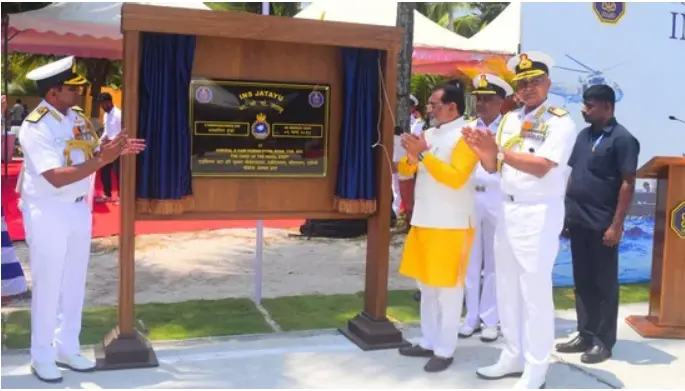
Key Highlights of INS Jatayu
- Commissioning and Upgradation
- Formerly Naval Detachment Minicoy, INS Jatayu is commissioned as an upgraded naval base on Minicoy Island in the Lakshadweep archipelago.
- Operational Control
- The base operates under the control of the Naval Officer in Charge (Lakshadweep), Southern Naval Command.
- Operational Reach Enhancement
- Enhances the operational reach of the Indian Navy in the Indian Ocean, strengthening capabilities for anti-piracy, anti-narcotics, and surveillance operations.
- Strategic Location
- Situated in Minicoy, the southernmost atoll of Lakshadweep, strategically overlooking vital Sea Lines of Communications (SLOCs).
- Counterbalancing China's Presence
- Reinforces India's ability to counterbalance and deter any attempts to undermine maritime dominance and territorial integrity, particularly in light of China's increasing presence in the Indian Ocean.
- Second Naval Base in Lakshadweep
- Effectively becomes the country’s second naval base in Lakshadweep, with the first being INS Dweeprakshak in Kavaratti, commissioned in 2012.
- Infrastructure and Security Coverage
- Equipped with additional infrastructure, including an airfield and personnel housing, to support naval operations and ensure comprehensive security coverage.
- Strategic Intersection
- Minicoy Island's strategic location at the intersection of crucial Sea Lines of Communications (SLOCs) enhances India’s maritime presence.
- Maritime Traffic and Pollution
- The island, located at the Eight Degree Channel and the Nine Degree Channel, is susceptible to maritime pollution due to heavy traffic in these critical SLOCs.
Key Highlights of INAS 334 Squadron
- Commissioning and Aircraft Type
- The Indian Naval Air Squadron (INAS) 334 is commissioned as the first squadron of MH-60R helicopters, also known as the "Seahawks," at INS Garuda, Kochi.
- MH 60R Seahawk Overview
- The squadron is part of a 24-aircraft Foreign Military Sales (FMS) contract signed with the United States government in February 2020.
- Versatile Roles
- MH 60R Seahawk, a maritime variant of the Blackhawk helicopter, is designed for roles such as anti-submarine warfare, anti-surface warfare, search and rescue, medical evacuation, and vertical replenishment.
- Strategic Deployment
- Deployment of Seahawks in the Indian Ocean Region (IOR) strengthens the Indian Navy's maritime presence, dissuading potential threats and ensuring a secure environment in this strategically crucial region.
|
UPSC Previous Year Questions Prelims (2014) Q. Which one of the following pairs of islands is separated from each other by the ‘Ten Degree Channel’? (a) Andaman and Nicobar Ans: (a) Prelims (2016) Q2. Which one of the following is the best description of ‘INS Astradharini’, that was in the news recently? (a) Amphibious warfare ship Ans: (c) Prelims (2017) Q3. Consider the following in respect of Indian Ocean Naval Symposium (IONS):
Which of the above statements is/are correct? (a) 1 only Ans: (b) Exp:
Mains (2013) Q. What do you understand by ‘The String of Pearls’? How does it impact India? Briefly outline the steps taken by India to counter this. Mains (2013) Q. Discuss the political developments in the Maldives in the last two years. Should they be of any cause for concern to India? |
Source: TH

Amendments to the Electricity (Rights of Consumers) Rules, 2020
In News: The Ministry of Power has introduced amendments to the Electricity (Rights of Consumers) Rules, 2020, focusing on accelerating Rooftop Solar Projects and enhancing consumer empowerment.
What are the Major Amendments in Electricity Rules, 2020?
- Streamlined Rooftop Solar Installation
- Exemption from technical feasibility study for systems up to 10 kW capacity.
- Reduced timeline for feasibility study for systems above 10 kW from 20 to 15 days.
- Mandated distribution system strengthening for rooftop solar PV systems up to 5 kW capacity by the distribution company at its own cost.
- Decreased commissioning time for distribution licensees from 30 to 15 days.
- Separate Connections for Electric Vehicle Charging
- Consumers can acquire distinct electricity connections for charging Electric Vehicles (EVs).
- Reduction in time for new electricity connections: 3 days in metropolitan areas, 7 days in other municipal areas, and 15 days in rural areas.
- Normal time frames maintained for rural areas with hilly terrain.
- Enhanced Consumer Rights in Residential Areas
- Owners in group housing societies, multi-storied buildings, etc., can opt for individual or single-point connections.
- Option selection through a transparent ballot conducted by the Distribution Company.
- Tariff parity for consumers with single-point or individual connections.
- Separate metering, billing, and collection for individual consumption, backup power, and common areas.
- Addressing Meter Reading Complaints
- Installation of an additional meter within five days in response to consumer complaints about meter reading inaccuracies.
- Additional meter usage to verify consumption for a minimum of three months, ensuring billing accuracy.
|
UPSC Previous Year Questions Prelims (2016) Q. Consider the following statements:
Which of the statements given above is/are correct? (a) 1 only Ans: (a) Mains (2020) Q. India has immense potential of solar energy though there are regional variations in its developments. Elaborate. |
Source: PIB
Rupa Tarakasi
In News: The renowned silver filigree, known as Rupa Tarakasi, hailing from the millennium city of Cuttack in Odisha, has recently been granted the Geographical Indication (GI) tag.

About Rupa Tarakasi
- Exquisite Silver Craft
- Rupa Tarakasi stands out as an exceptionally refined form of silver craft known for its intricacy and beauty.
- Location and Legacy
- Practiced in the silver city of Cuttack, Odisha, Rupa Tarakasi has a rich history dating back to at least the 12th century. It gained significant patronage during the Mughal era.
- Evolution through Time
- As Cuttack transitioned through different rulers, the art of silver filigree adapted and evolved, taking on new forms with each era.
- Crafting Process
- The intricate process involves transforming silver bricks into thin wires or foils (tara) from which silver filigree is meticulously crafted, showcasing various designs (kasi).
- The main metal alloy includes different grades of silver, complemented by metals like copper, zinc, cadmium, and tin.
- Artisan Identity
- The skilled artists practicing Rupa Tarakasi are referred to as "Rupa Banias" or "Roupyakaras" in Odia.
- Diverse Creations
- Rupa Tarakasi artisans extend their craftsmanship to create a diverse array of items, including jewellery worn by Odissi dancers, decorative artifacts, accessories, as well as religious and cultural pieces.
- The craft has permeated various aspects of life and art in the region.
Source: TI
Dying Declaration
In News: The recent ruling by the Supreme Court emphasizes that the accused's conviction can be upheld solely relying on the dying declaration, provided the statement made by the victim instills confidence in the court and demonstrates reliability.
About Dying Declaration
- Definition: A Dying Declaration refers to a statement made by a deceased person and is governed by clause (1) of Section 32 of the Indian Evidence Act 1872.
- Scope: It typically pertains to the cause of the declarant's death and is admissible as evidence in both civil and criminal proceedings.
- Admissibility Reasoning: The admissibility of a dying declaration is rooted in the Latin maxim 'Nemo Mariturus Presumuntur Mentri,' translating to "Man Will Not Meet His Maker with Lying on His Mouth."
- Format: There is no specific format required for a dying declaration, and it can take various forms such as oral, written, through gestures, thumb impressions, or even in a question-and-answer format. A written declaration, ideally, should capture the exact words of the declarant.
- Recording Authority: While a declaration recorded by a Magistrate is considered optimal, Supreme Court guidelines state that anyone, including public servants or doctors in a hospital setting, can record a dying statement.
- Evidentiary Value: In legal proceedings, a dying declaration carries substantial weight and can be the sole basis for conviction without additional corroborating evidence. However, the court must ensure that the statement was not influenced, coached, or a product of imagination. It also needs to establish that the deceased was of sound mind and had a clear opportunity to observe and identify the assailants.
- Conditions for Admissibility: For a dying statement to be admissible, the court must verify that the person making the statement is not likely to live. If there's a likelihood of survival, the statement becomes inadmissible as a dying declaration.
Source: LL
Under-River Metro Tunnel
In News: The Prime Minister recently inaugurated the metro train service connecting Howrah Maidan and Esplanade in Kolkata, marking the historic commencement of India’s first under-river metro tunnel.
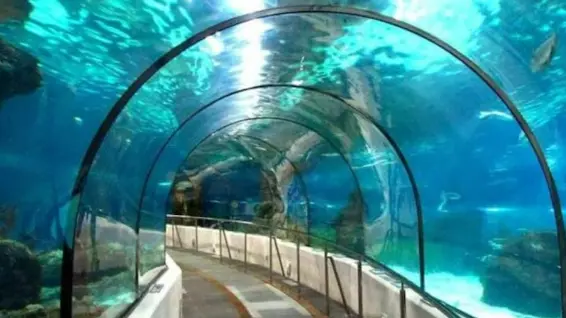
India's First Under-River Metro Tunnel: Kolkata Metro's Engineering Marvel
- Project Overview
- Integral part of Kolkata Metro’s East-West Corridor.
- Located in the city's northeast, passing beneath the Hooghly River.
- Tunnel situated 13 meters below the riverbed and 37 meters below ground level.
- Spans 4.8 km underground from Howrah Maidan to Esplanade.
- Financial Investment
- Constructed at a cost of Rs 4,965 crore.
- Represents a significant financial commitment to enhance Kolkata's metro connectivity.
- Record-Setting Depths
- Features the country's deepest metro station, Howrah Maidan station, positioned 32 meters below ground level.
- Showcases engineering prowess in achieving unprecedented depths.
- Quick River Crossing
- Aims to swiftly cover the 520-meter stretch under the Hooghly River in just 45 seconds.
- Enhances overall travel efficiency and connectivity in the city.
Source: FE

International Centre of Excellence for Dams
In News: The Indian Institute of Science (IISc) Bangalore and the Ministry of Jal Shakti (MoJS) have entered into a Memorandum of Agreement (MoA) to establish the International Centre of Excellence for Dams (ICED).
International Centre of Excellence for Dams (ICED)
- Purpose: ICED will serve as the technological arm of the Ministry, offering specialized technical support for investigations, modelling, research, innovations, and technical services to dam owners in India and abroad.
- Duration: The Memorandum of Agreement (MoA) is valid for ten years or until the conclusion of the Dam Rehabilitation and Improvement Project (DRIP) Phase-II and III Scheme, whichever is earlier.
- Dam Safety Focus: The center will focus on dam safety, addressing emerging challenges through scientific research and providing solutions.
- Academic Courses and Research: ICED will provide area-specific academic courses, training programs, workshops, and conduct applied research and technology transfer in dam safety management at local, regional, national, and international levels.
- Funding: The Ministry of Jal Shakti will grant 118.05 crore rupees for procuring goods and machinery, establishing new laboratories, strengthening existing ones, initiating research activities, and modernizing infrastructure for ICED.
- Research Areas: ICED will conduct research in two core areas - Advanced construction and rehabilitation materials, Material testing for dams, and Comprehensive (multi-hazard) risk assessment of dams.
- Role in Atmanirbhar Bharat: ICED is positioned to contribute to building an Atmanirbhar Bharat (self-reliant India) and aims to share knowledge and expertise in dam safety with underdeveloped and developing nations.
- Location: ICED is hosted at IISc Bangalore and marks the second International Centre for Dam Safety, following the establishment of the first ICED at IIT Roorkee in February 2023.
Source: AIR
Addressing Gender Disparity in the Realm of Green Jobs
In News: The global move towards low-carbon development provides India with a distinctive opportunity. Nevertheless, the transition poses a challenge of gender disparity, as men are more likely to transition to green jobs at a faster rate than women.
Occupational Concentration
- Gender norms often steer women toward sectors like apparel and food, while men dominate in infrastructure and manufacturing.
- The historical gender divide persists in green jobs, with women underrepresented in sectors such as manufacturing, construction, renewable energy, and automobiles.
Underrepresentation in Renewable Energy
- Despite India's remarkable 250% increase in renewable energy capacity from 2015 to 2021, women make up only 11% of the workforce in the solar rooftop industry.
- The challenge lies in integrating women into the rapidly growing green economy, where stereotypes and social norms continue to dictate occupational choices.
Training Disparities
- A 2023 study by the Skill Council for Green Jobs reveals that 85% of green skills training is directed towards men.
- Over 90% of women perceive social norms as restricting their participation in such training, perpetuating the underrepresentation of women in emerging green sectors.
STEM Graduates and Sectoral Representation
- While 42.7% of STEM graduates in India are women, their representation drops to 30.8% in key sectors for the green transition.
- Despite more women pursuing STEM education, barriers persist in entering fields crucial for sustainable development, reflecting gender biases and stereotypes.
Disparities in Leadership Positions
- A Confederation of Indian Industry (CII) 2019 report notes that men comprise 85% of the workforce in sectors like infrastructure, transport, construction, and manufacturing.
- The underrepresentation of women in leadership positions perpetuates gender disparities, impacting decision-making processes.
Global Context
- Globally, women are facing challenges in the transition to a low-carbon economy, where new opportunities coexist with job displacement and transformation.
- COP 28’s high-level dialogue launched the 'Gender-Responsive Just Transitions and Climate Action Partnership,' emphasizing improved data, targeted finance, and skill development.
Benefits of Women's Participation
- Increased representation challenges gender biases, fostering inclusivity in traditionally male-dominated sectors.
- Enhanced economic opportunities for women in green jobs contribute to economic growth and personal financial stability.
- Women's participation creates opportunities for advancement in technical and social spheres, fostering personal and professional growth.
Way Forward
- Addressing Data Gaps:
- Improve understanding of women’s work in green jobs by mapping emerging areas for green growth.
- Collect sex-disaggregated data on green jobs to enhance women’s participation.
- Support Women Entrepreneurs:
- Implement gender-focused financial policies and products catering to women entrepreneurs.
- Provide collateral-free lending, financial literacy training, and build supportive networks to unlock their potential.
- A Gender-Just Transition:
- Develop a holistic strategy for a gender-just transition, encompassing employment, social protection, reduced care work burden, and skill development.
- Promote collaboration across government, private sectors, and stakeholders to leverage innovation, technology, and finance for women entrepreneurs and workers.
Conclusion
- Prioritize women's empowerment and gender equity in climate actions for a socially equitable and inclusive future.
- Bridge the gender gap in green jobs through concerted efforts addressing social norms, collecting gender-disaggregated data, and implementing inclusive policies.
Source: TH
Share the article
Edukemy’s Current Affairs Quiz is published with multiple choice questions for UPSC exams
MCQ
Get Latest Updates on Offers, Event dates, and free Mentorship sessions.

Get in touch with our Expert Academic Counsellors 👋
Frequently Asked Questions
UPSC Daily Current Affairs focuses on learning current events on a daily basis. An aspirant needs to study regular and updated information about current events, news, and relevant topics that are important for UPSC aspirants. It covers national and international affairs, government policies, socio-economic issues, science and technology advancements, and more.
UPSC Daily Current Affairs provides aspirants with a concise and comprehensive overview of the latest happenings and developments across various fields. It helps aspirants stay updated with current affairs and provides them with valuable insights and analysis, which are essential for answering questions in the UPSC examinations. It enhances their knowledge, analytical skills, and ability to connect current affairs with the UPSC syllabus.
UPSC Daily Current Affairs covers a wide range of topics, including politics, economics, science and technology, environment, social issues, governance, international relations, and more. It offers news summaries, in-depth analyses, editorials, opinion pieces, and relevant study materials. It also provides practice questions and quizzes to help aspirants test their understanding of current affairs.
Edukemy's UPSC Daily Current Affairs can be accessed through:
- UPSC Daily Current Affairs can be accessed through Current Affairs tab at the top of the Main Page of Edukemy.
- Edukemy Mobile app: The Daily Current Affairs can also be access through Edukemy Mobile App.
- Social media: Follow Edukemy’s official social media accounts or pages that provide UPSC Daily Current Affairs updates, including Facebook, Twitter, or Telegram channels.

